Create successful ePaper yourself
Turn your PDF publications into a flip-book with our unique Google optimized e-Paper software.
Carrara (www.comune.carrara.ms.it), bordering the Liguria and Emilia Romagna<br />
regions starts from the Marina stretching out towards the Apuan Alps which<br />
represent the natural protection of Carrara. The Apuan Alps host the famous white<br />
marble quarries, which are known all around the world since masterpieces of famous<br />
artists such as Michelangelo and Canova were carved from Carrara marble. A great<br />
example of the use of such marble is the Dome which has been entirely constructed with<br />
the precious stone. Between the Fifteenth and the Nineteenth century Carrara, together<br />
with Massa, gained the dukedom rank, and the combination between the two towns still<br />
exists at province level. Carrara has been, and still is, the chief town of both the italian<br />
and international anarchistic philosophy, and the Germinal archive/library which collects<br />
the anarchist history as well as the history of the working-class movement is a perfect<br />
testimony thereof. The name of Carrara shall leads back to marble, or even better to stone,<br />
which is named Kair in the Celtic language. Carrara crosses three regions, and until 1870 it<br />
belonged to the Emilia territory, to the last Tuscany town before entering the Liguria region.<br />
From 1938 until the end of the war Fascists changed the name of the town into Apuania.<br />
The Carrara dialect is a strange idiom, vaguely Emilian (or indeed a mix of Lombard and<br />
Emilian dialect) which does not suffer Tuscan and Ligurian influences. In 1920 Carrara,<br />
abounding of villas, Patrician palaces and fountains, has been struck by an<br />
earthquake which partially changed its aspect. The “Rocca” and “Palazzo” structures<br />
underwent a restoration which can still be appreciated nowadays and in which the<br />
Renaissance architecture wonderfully integrates with the antique Medieval style. During the<br />
last war period Carrara is a strategically important place (located on the so called “Gothic<br />
line”) but also the object of atrocious reprisals, scouring and devastating bombardments<br />
which caused hundred of civil victims and the almost total destruction of the lived in areas<br />
and of the commercial and industrial zones.<br />
17


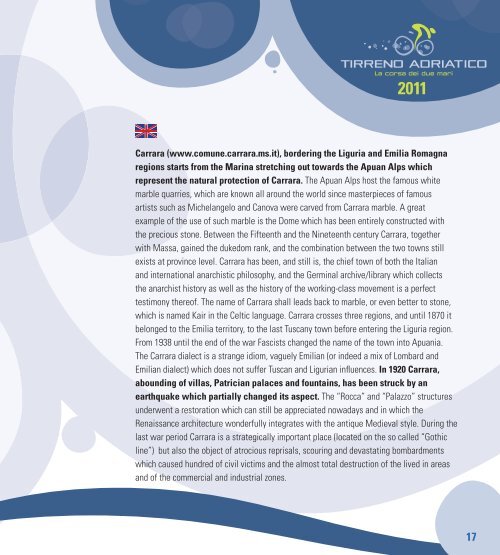
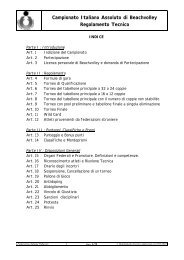



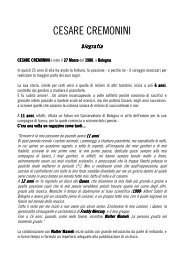
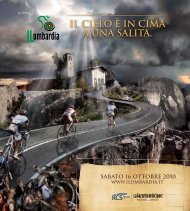
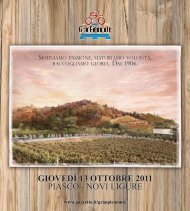
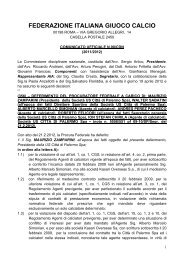

![Pallanuoto [gli Sport - Pallanuoto]](https://img.yumpu.com/370265/1/174x260/pallanuoto-gli-sport-pallanuoto.jpg?quality=85)
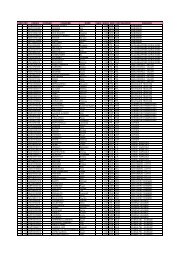


![Canottaggio [gli Sport - Canottaggio]](https://img.yumpu.com/364562/1/174x260/canottaggio-gli-sport-canottaggio.jpg?quality=85)